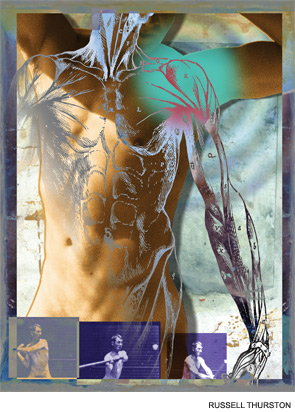
ATLANTA—Rheumatologists and health professionals reviewed the latest information on diagnosing and treating inflammatory myopathies during the ACR Clinical Symposium, “Inflammatory Myopathy Update,” here at the 2010 ACR/ARHP Annual Scientific Meeting. [Editor’s Note: This session was recorded and is available via ACR SessionSelect at www.rheumatology.org.] The session’s three presentations focused on modalities to diagnose inflammatory myopathy, the role of autoantibodies in myositis, and exercise intervention.
Diagnosing Inflammatory Myopathy
John A. Carrino, MD, MPH, associate professor of radiology and orthopaedic surgery and section chief of musculoskeletal radiology at Johns Hopkins University in Baltimore, started the session by reviewing some of the clinical features that usually point to myositis, including Gottron’s papules, the body symmetry of the disorder, proximal limb and truncal weakness, Raynaud’s disease, arthritis, and lung disease. He also pointed out clinical features that typically lead away from a myositis diagnosis, such as family history, weakness related to exercise and eating, cranial nerve involvement, muscle cramping, and early atrophy or hypertrophy.
While polymyositis, dermatomyositis, and inclusion body myositis are most commonly considered with inflammatory myopathy, he noted that there are a host of other emerging myopathies, such as necrotizing myopathy, giant cell myositis, eosinophilic myositis, granulomatous myositis, and others.
In the mid-1970s, Bohan and Peter developed criteria for polymoyositis and dermatomyositis before the use of magnetic resonance imaging (MRI).1,2 However, these criteria had some limitations, such as poor specificity in distinguishing polymyositis from late-onset muscular dystrophies, omission of the possible diagnosis of inclusion body myositis, and the fact that inflammation seen on muscle biopsy is not necessarily specific for inflammatory myositis. “There may be other disorders that cause muscle inflammation,” Dr. Carrino said. Other diagnostic criteria subsequently emerged.
MRI is typically used in myosititis to confirm diagnosis and help with the phenotype, to rule out myositis mimics, and to select the site of the muscle biopsy so as to make an accurate histologic diagnosis, Dr. Carrino said. During treatment, MRI can help follow disease progression and therapeutic response.
Sometimes, cases referred to the Johns Hopkins myositis center are not actually myositis but instead are muscular dystrophy, fasciitis, metabolic bone disease, or muscle strains.
—John A. Carrino, MD, MPH
Sometimes, cases referred to the Johns Hopkins myositis center are not actually myositis but instead are muscular dystrophy, fasciitis, metabolic bone disease, or muscle strains, he noted.
Advanced techniques for muscle MRI are not always used but include open-bore 3T MRI and MR spectroscopy, which may be helpful in the future for myositis diagnosis.
Autoantibodies
In his presentation, Harsha Gunawardena, MD, senior research fellow at the University of Bath in Bath, U.K., focused on the role of autoantibodies in myositis. Autoantibodies are now detected in about 70% of adult and 60% of juvenile inflammatory myopathy patients, he said. These autoantibodies include anti-p200/100, anti–Mi-2 dermatomyositis subtype, anti-p155, anti-SAE, and the anti-MDA5 dermatomyositis subtype. Although the signs and symptoms associated with each autoantibody may vary, they can include skin changes, the risk for interstitial pneumonia, and cancer. For example, more than 50% of patients who are anti-p155/140 positive have cancer, Dr. Gunawardena said.

